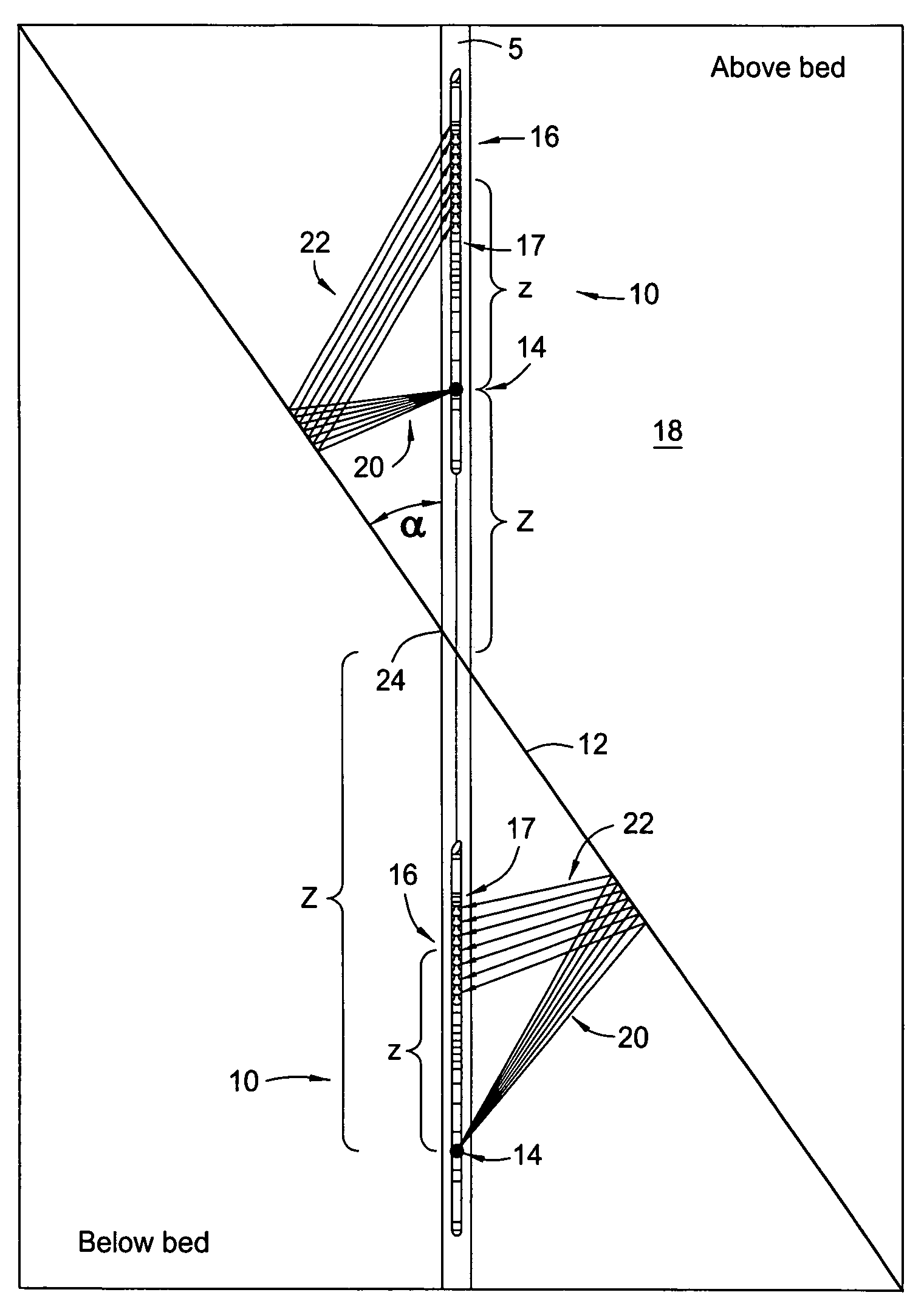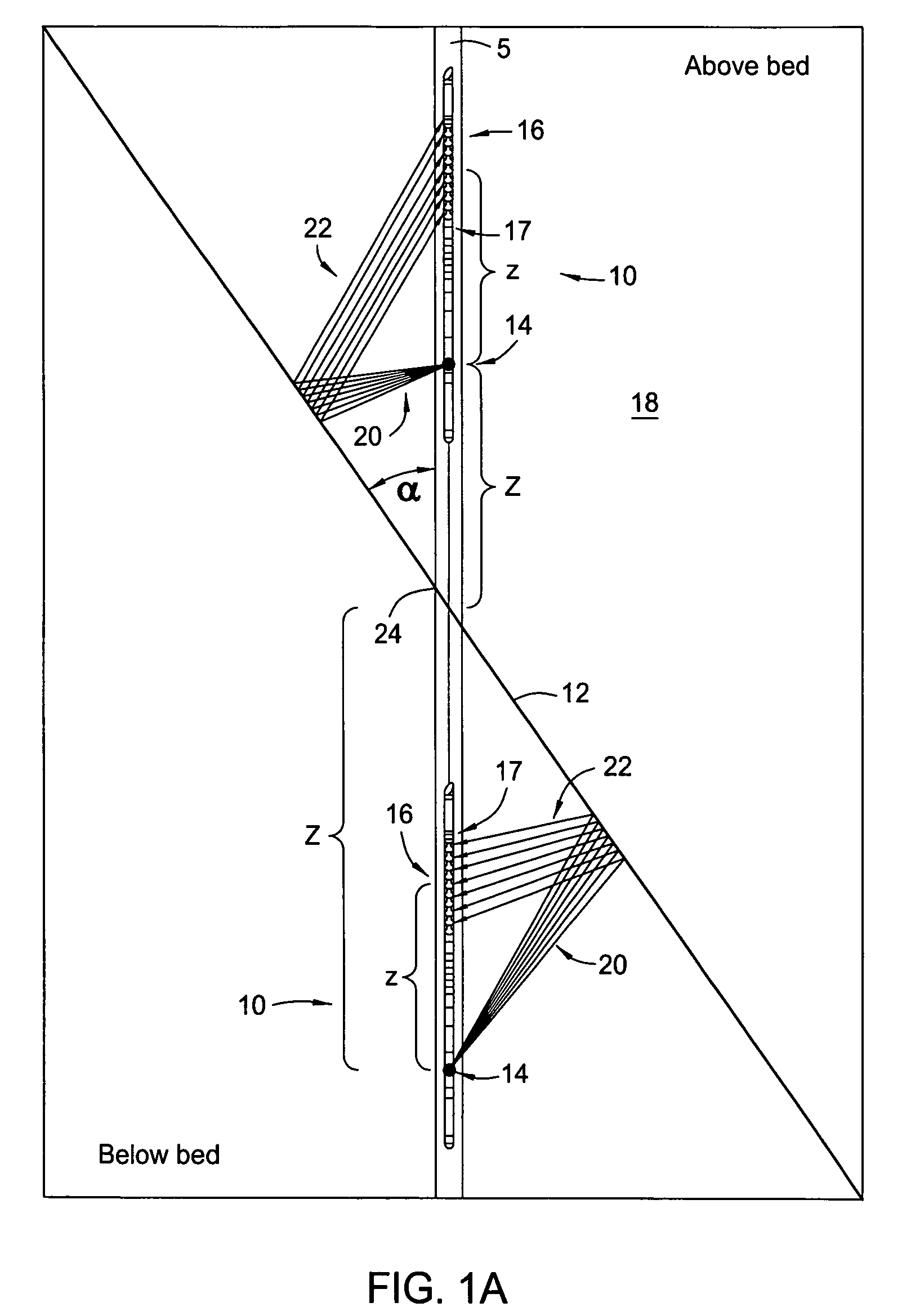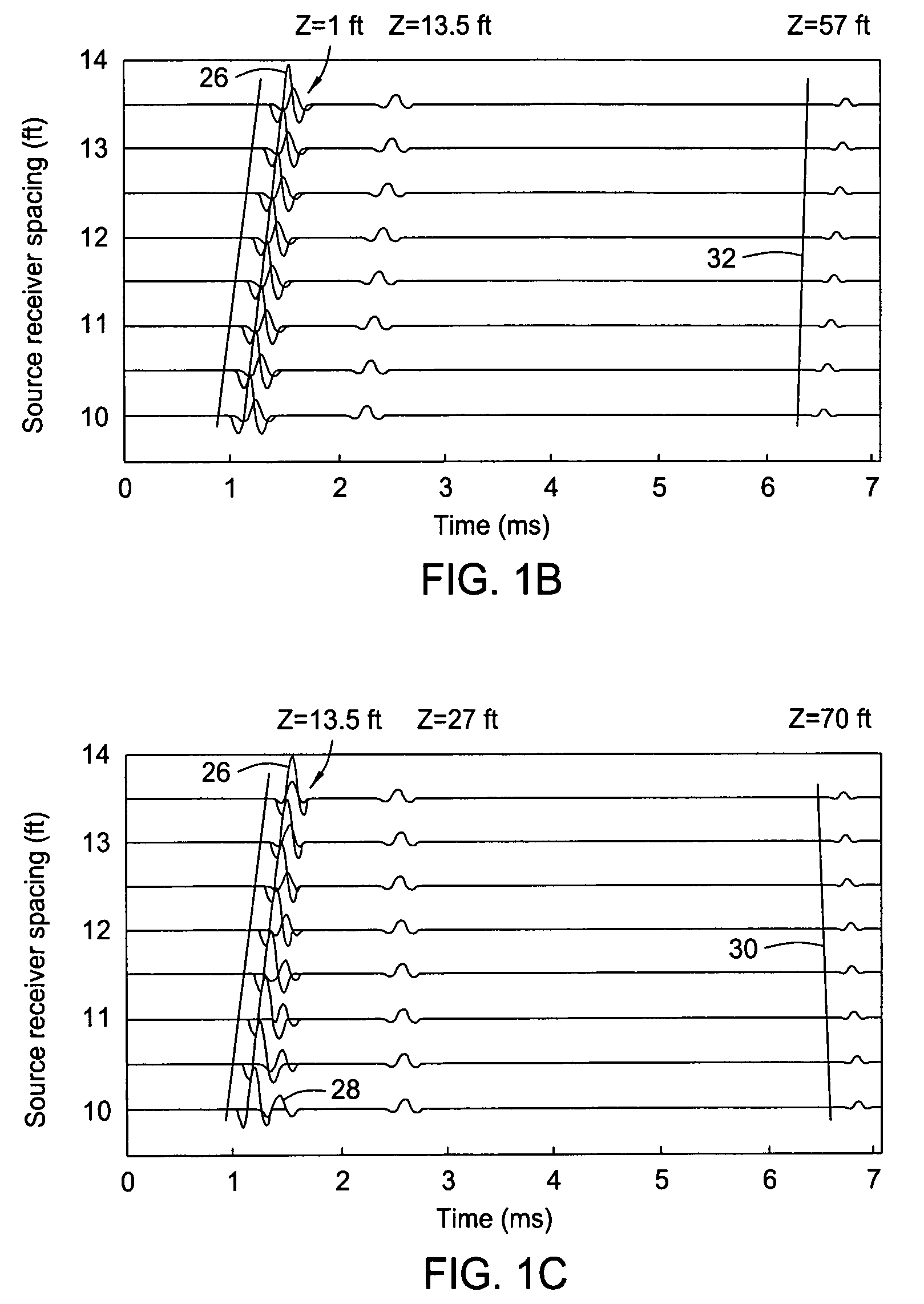Method for processing acoustic reflections in array data to image near-borehole geological structure
a signal and array data technology, applied in the field of signal data collection and processing, can solve the problems of limited depth that these devices can monitor within the formation, skewed data, and difficulty in downhole imaging, so as to enhance the moveout difference, and reduce the distance between the signal transmitter and the receiver
- Summary
- Abstract
- Description
- Claims
- Application Information
AI Technical Summary
Benefits of technology
Problems solved by technology
Method used
Image
Examples
Embodiment Construction
[0024]Disclosed herein is a method and apparatus for obtaining an image of geological structures in the near borehole formation by using acoustic reflections from these structures. The reflections are usually small and often indiscernible in the background of overwhelming acoustic waves that travel directly along the borehole and thus need to be properly analyzed and enhanced for utilization in the imaging application. The method disclosed herein includes two primary steps. The first is a wave separation step that separates the reflections from the direct waves according to their moveout difference in an acoustic array. The second step enhances the reflections by stacking them along the reflection time moveout in the acoustic array using a priori information about a structural dip or bed inclination in the formation.
[0025]The acoustic array disclosed herein is configured so that the reflections and the direct waves have the maximum possible moveout difference. Based on this criterio...
PUM
 Login to View More
Login to View More Abstract
Description
Claims
Application Information
 Login to View More
Login to View More - R&D
- Intellectual Property
- Life Sciences
- Materials
- Tech Scout
- Unparalleled Data Quality
- Higher Quality Content
- 60% Fewer Hallucinations
Browse by: Latest US Patents, China's latest patents, Technical Efficacy Thesaurus, Application Domain, Technology Topic, Popular Technical Reports.
© 2025 PatSnap. All rights reserved.Legal|Privacy policy|Modern Slavery Act Transparency Statement|Sitemap|About US| Contact US: help@patsnap.com



